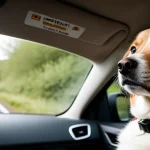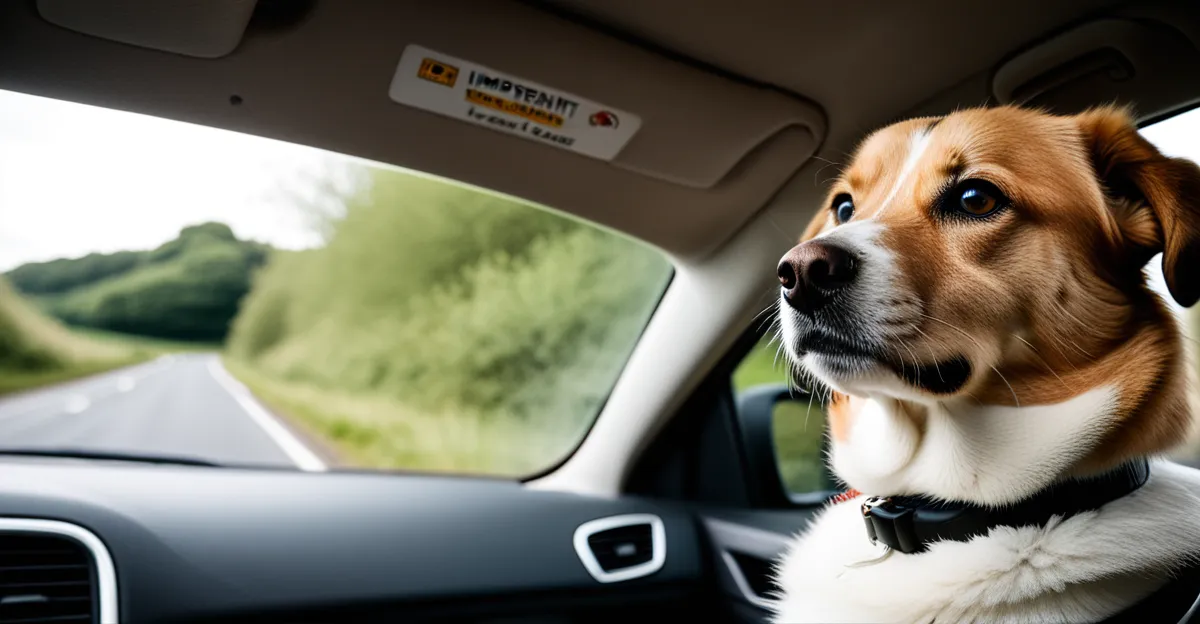Legal Requirements for Pet Travel in the UK
When planning to travel with your pet, understanding the legal requirements is crucial to ensure a smooth and stress-free journey. The UK pet travel laws are designed to protect both animals and humans, ensuring pets are transported safely and responsibly.
Overview of UK Pet Travel Regulations
The UK has specific travel regulations for pets, which vary depending on the destination and type of animal. Before traveling, you must ensure your pet is microchipped and vaccinated against rabies. These steps are not only mandatory but also provide a level of safety for your pet and others. Compliance with these travel regulations is necessary to avoid quarantine or entry refusal.
Also read : The Ultimate Guide to Selecting Eco-Friendly Car Wash Products Perfect for UK Weather
Necessary Documentation
You will need several important documents to travel legally with your pet. These include a valid pet passport or an animal health certificate, depending on where you’re coming from. This documentation proves that your pet meets all health and safety requirements, which is essential to avoid delays and complications at border crossings.
Penalties for Non-Compliance
Failing to adhere to the UK pet travel laws can result in significant penalties. These can range from fines to the mandatory quarantine of your pet, or possibly even refusal of entry into the UK. Ensuring you follow all legal requirements not only prevents these penalties but also ensures the well-being of your pet during travel. Always being informed and prepared can make your journey smoother and stress-free.
Topic to read : Your Essential Guide to Selecting the Perfect Cargo Van for Your UK Business Requirements
Safety Tips for Pets in Vehicles
Ensuring pet safety during vehicle travel is as crucial as any other aspect of pet travel. Proper precautions can prevent accidents and make the journey more pleasant for both you and your pet. Here are some essential travel tips to keep in mind:
Importance of Using Seat Belts or Pet Carriers
One of the foremost vehicle safety considerations is the use of pet seat belts or carriers. These restraints minimize the risk of injury in the event of an accident and keep your pet secure in the backseat, preventing undue movement. A properly fitted pet carrier can make all the difference between a safe ride and a hazardous one. Ensuring the carrier is well-ventilated and secured to the seat adds an extra layer of safety.
Avoiding Distractions While Driving with Pets
Pets can be as distracting as using a phone while driving. It’s important to mitigate these distractions to maintain vehicle safety. Keeping animals in the back seat and using barriers or specialized harnesses can prevent them from jumping into the front seat or obstructing the driver’s view. Ensuring your pet has toys or chew items can keep them occupied, reducing potential distractions.
Regular Breaks During Long Journeys
For long trips, it is vital to plan for regular stops to allow your pet to stretch and relieve themselves, which is a simple yet effective travel tip. Breaks not only provide a physical respite but reduce stress levels for both the driver and the pet. By creating a routine during travel, you can maintain your pet’s wellness and comfort. Always use a leash when outside the vehicle to prevent accidents or getting lost.
Recommended Travel Gear for Pets
Having the right travel gear can significantly enhance your pet’s comfort and safety during journeys. Selecting the appropriate pet accessories is not just about convenience; it plays a crucial role in ensuring a stress-free experience for both you and your furry companion. Here’s what you should consider:
Safety Harnesses
Safety harnesses are indispensable for securing your pet during travel. These provide protection by attaching to seat belts, minimizing movement and reducing injury risk in case of sudden stops. Choosing a harness that is adjustable and padded ensures both security and comfort. Look for those made from durable materials for long-term use.
Pet Carriers
When it comes to pet carriers, size and ventilation are key. The right carrier should allow your pet to stand, turn around, and lie down comfortably. Ensuring proper ventilation prevents overheating, especially during long trips. Opt for multi-functional gear that can serve both as a carrier and a bed, providing familiarity and comfort.
Travel Bowls
Hydration is vital during travels, making travel bowls an essential item. Choose collapsible bowls for easy storage and transport. These should be made of non-toxic materials and come with a secure lid to prevent spills. Using bowls that your pet is already familiar with can encourage them to eat and drink normally, maintaining their wellness on the go.
Keeping Pets Comfortable During Travel
Ensuring pet comfort during travels is essential for a stress-free journey. With travel comfort in mind, there are several strategies to make the experience enjoyable for your furry friend.
Tips for Acclimating Pets to Car Travel
Begin by gradually exposing your pet to car rides. Short, frequent trips can help them become familiar with the vehicle environment. Introduce travel comfort by allowing them to explore the car while parked. Familiar scents and a favorite blanket can instill a sense of security.
Importance of Hydration and Food Scheduling
Maintaining pet wellness during travel includes a consistent feeding and hydration schedule. Offer water regularly and plan meal times to prevent travel sickness. It’s advisable to feed your pet a light meal a few hours before departure to allow digestion and minimize discomfort while traveling.
Creating a Calming Environment in the Vehicle
A tranquil setting contributes significantly to pet comfort. Maintain a stable temperature in the vehicle and reduce loud noises from the radio or conversations. Consider using a pet calming spray or diffuser with natural pheromones to soothe anxious pets. Placing a beloved toy or item nearby can also provide reassurance.
Potential Hazards to Be Aware Of
Travelling with pets requires vigilance and awareness of potential hazards to ensure their safety and comfort throughout the journey.
Risks of Leaving Pets Unattended in Vehicles
Leaving pets unattended in vehicles can lead to serious pet risks due to rapidly changing environmental conditions. Vehicles can quickly heat up, even with windows slightly open, leading to heatstroke or dehydration. Unattended pets might also attract unwanted attention or face theft risks. Always ensure your pet accompanies you or is left in a safe, supervised area.
Extreme Weather Conditions and Their Impact
Extreme weather conditions pose significant travel dangers for pets. Heat can cause overheating, while cold snaps can result in hypothermia. Adequate planning is essential. Carry portable fans or blankets, depending on the weather, and never leave your pet unsheltered. Monitoring weather forecasts before travel can help you prepare effectively.
Common Behavioral Issues in Pets During Travel
Traveling can exacerbate behavioral issues in pets. Anxiety is common, leading to restlessness or excessive barking. Address these issues by using familiar objects, such as toys or beds, to provide reassurance. Gradual exposure to travel environments can also help acclimate pets, reducing stress and minimizing travel dangers.
Expert Insights on Pet Travel
Embarking on a journey with your pet can be an overwhelming experience, but armed with expert knowledge from veterinary advice and pet travel experts, you can ensure a seamless trip.
Insights from Veterinarians on Safe Travel Practices
Veterinarians emphasize the importance of familiarizing pets with travel early on to ease anxiety. Veterinary advice often includes ensuring your pet is healthy enough to travel. A pre-trip check-up can verify this and allow for necessary vaccinations. Managing pet wellness by following feeding and medication schedules also plays a crucial role in travel safety.
Tips from Pet Travel Specialists on Preparation
Pet travel specialists recommend thorough preparation to avoid common pitfalls. This includes securing all necessary documentation and practicing with short trips to acclimate your pet. They often suggest creating a packing checklist of travel essentials, such as first aid kits and comfort items, to ensure nothing is forgotten. Their expertise helps pet owners navigate the complexities of travel regulations seamlessly.
Common Misconceptions About Traveling with Pets
One prevalent misconception is that pets can adapt to travel conditions without prior preparation. Contrary to this belief, professional tips indicate that gradual exposure to travel environments is essential. Another misconception involves underestimating climate impact; specialists suggest planning for extreme weather conditions to protect against possible travel dangers. Understanding these nuances helps pet owners better anticipate and address potential issues.










